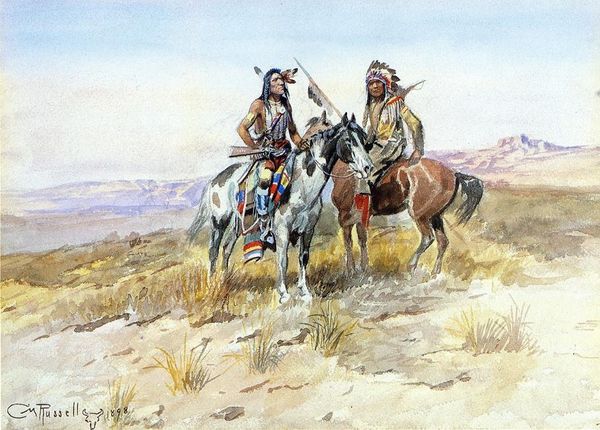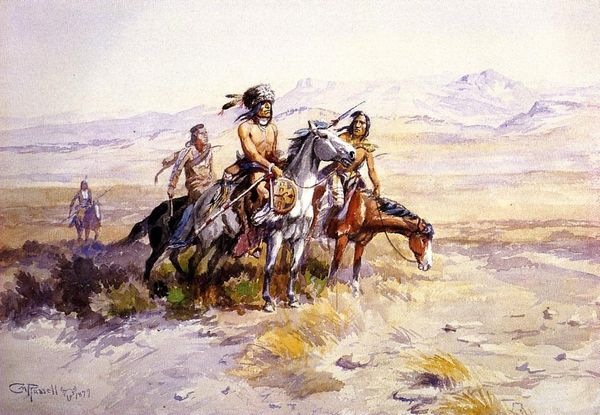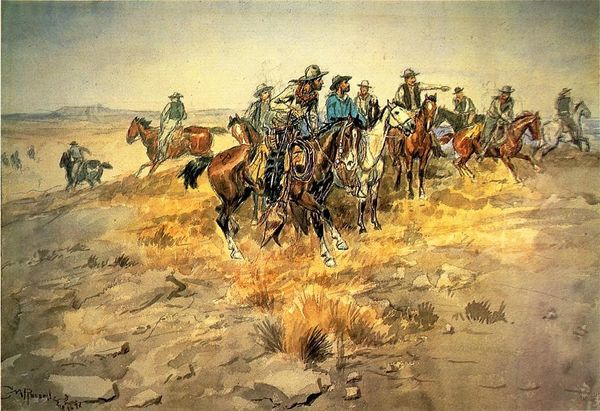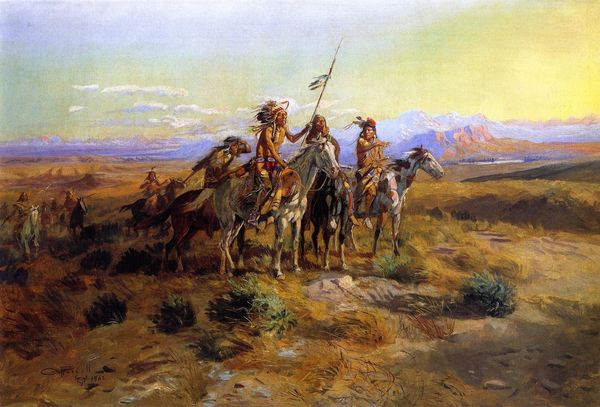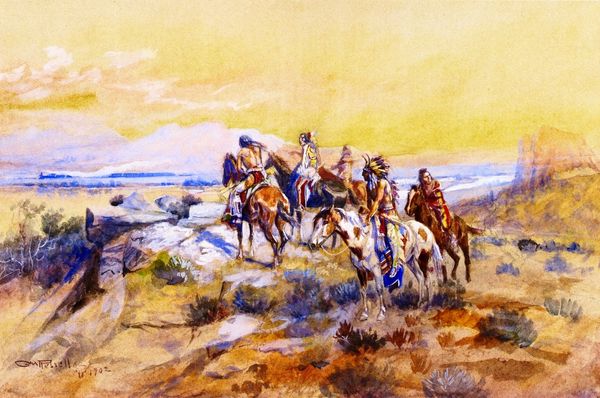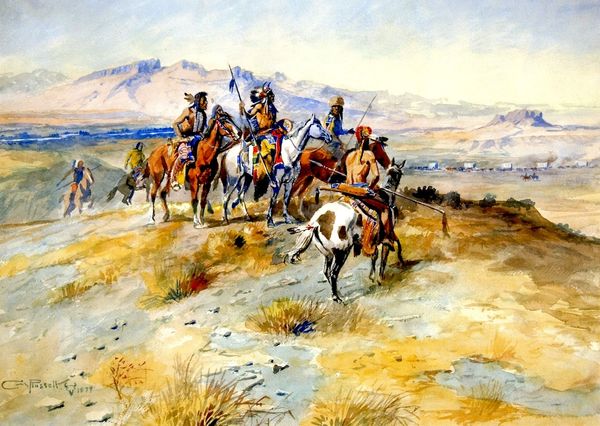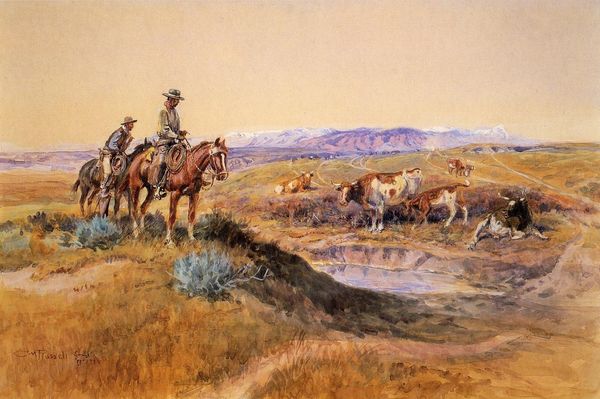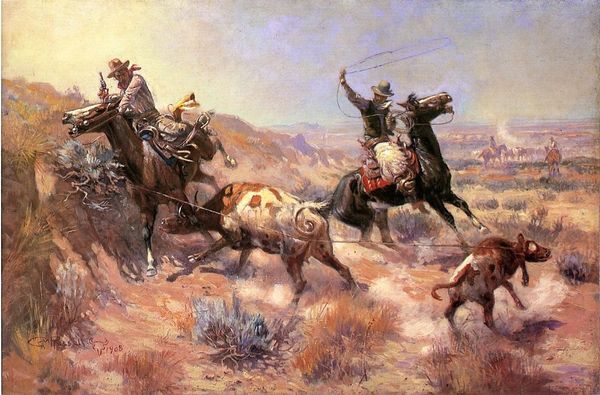
painting
#
narrative-art
#
painting
#
landscape
#
oil painting
#
watercolor
Copyright: Public domain
Editor: This is Charles Russell’s “Indian Scouting Party” from 1897, made with watercolor and oil paint. It’s quite a detailed painting depicting a group of Indigenous people on horseback overlooking the landscape. I’m immediately struck by the way the figures blend with the landscape. How do you interpret this work, especially considering the period it was created in? Curator: Well, considering the late 19th-century context, this image presents a complex narrative. Russell, like many artists of his time, was simultaneously fascinated by and complicit in the romanticized, often distorted, portrayal of Native Americans as a vanishing race. The scouting party here could be interpreted as both a testament to their skill and resilience, and a prelude to their forced displacement and cultural erasure. What tensions do you observe in Russell’s portrayal? Editor: I see the tension in the way they are part of the landscape but also separated, like a diorama. Are they the scouts or the ones being scouted by history? Curator: Exactly! This sense of observation underscores the power dynamics at play. Think about who the intended audience for this painting was – likely white Americans consuming images that reinforced their vision of the West as theirs to conquer. Russell’s work becomes part of a visual rhetoric that justified westward expansion and the subjugation of indigenous peoples. Do you see the composition serving that purpose, intentionally or otherwise? Editor: Yes, it's like the figures are frozen in this tableau, observed from a distance. But I wonder, does focusing solely on the problematic aspects diminish any artistic merit the work might possess? Curator: It’s a critical question! Acknowledging the harmful historical context doesn't negate artistic analysis, but enriches it. We can appreciate Russell's technical skill while remaining aware of the complex cultural narratives his work perpetuates and reflects. We must grapple with his role in shaping and circulating harmful stereotypes, even if unintentionally. Editor: That makes sense. Looking at art with this critical lens gives us a better view of both the artist and society. Curator: Indeed. It's about acknowledging the layered meanings and power dynamics inherent in representation. And using that knowledge to engage critically with art.
Comments
No comments
Be the first to comment and join the conversation on the ultimate creative platform.

